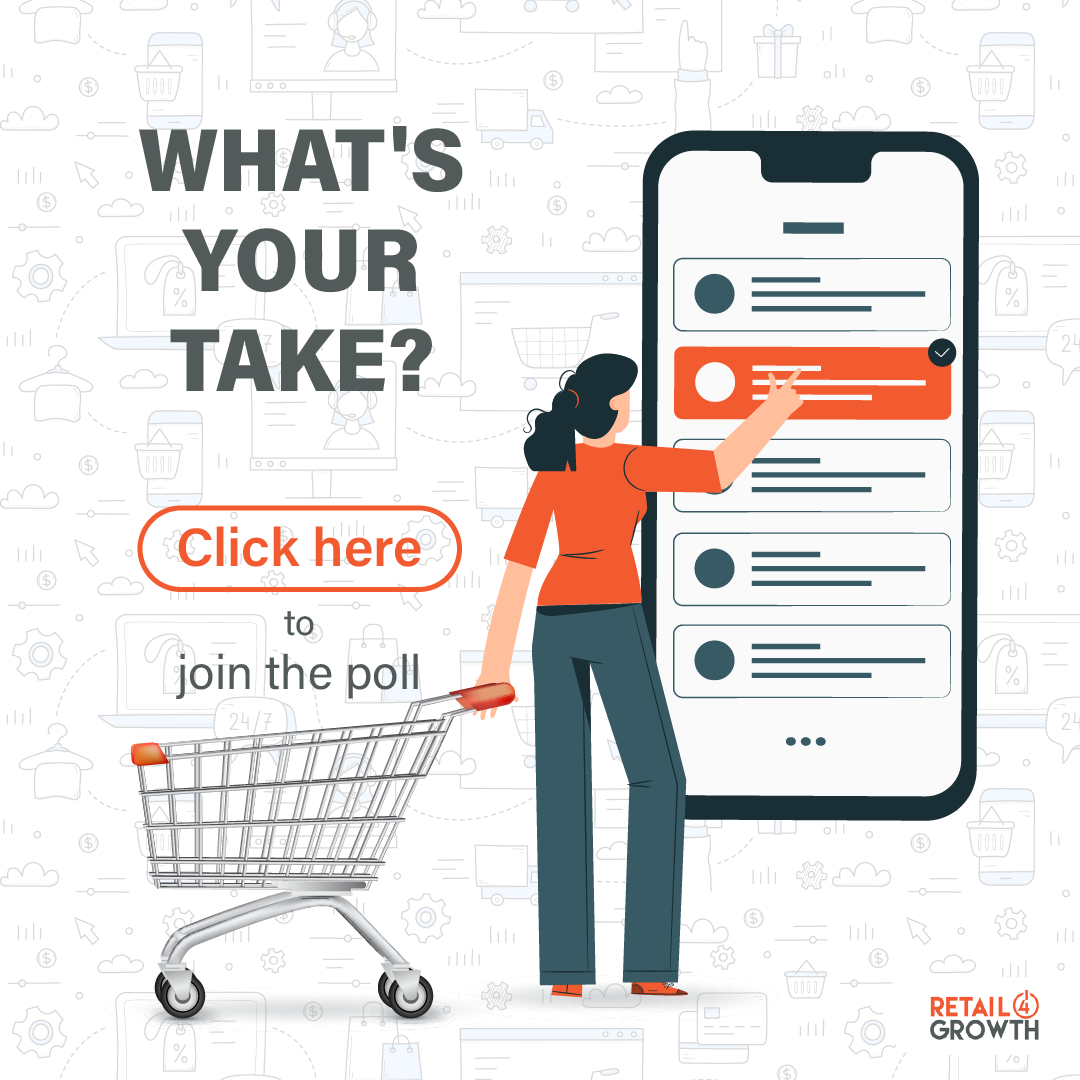‘CX in physical retail is about making sure each person feels recognized, understood, and valued’
By Retail4Growth Bureau | August 01, 2025
“We’re here to help brands make every store visit consistent, meaningful, and unforgettable, so they can stand out and retain customers,” says Gurpal Singh, Chief Operating Officer, Startek, as he shares with Retail4Growth how physical retail is evolving through smart tech, real-time insights, and a people-first approach.

How does Startek define customer experience management in the offline/physical retail space?
At Startek, we see customer experience in physical retail as a blend of intuition, empathy, and technology. While digital touchpoints are growing, the human connection that happens in-store still plays a powerful role in shaping brand loyalty. CX management in this space is about making sure each person who walks into a store feels recognized, understood, and valued.
That means giving store associates the tools and data they need—real-time insights, past preferences, customer sentiment—so they can truly personalize each interaction. We bring together AI and human support in a way that allows retail teams to act with agility and empathy. Our goal is simple: to help brands turn every in-store interaction into a memorable experience.
Can you share a broad overview of your retail clientele?
We partner with a wide range of retail clients—from iconic global brands with thousands of stores to fast-growing startups entering new markets. They come from categories like fashion, electronics, personal care, home décor, and lifestyle.
What they all have in common is a desire to create consistent, engaging customer experiences, whether someone is browsing online or walking into a store. We help them bridge that gap. Many of these retailers operate across geographies, so we bring in our multilingual teams and local expertise to deliver support that feels personal, no matter where the customer is.
What are the top pain points of brick-and-mortar retail clients that Startek addresses with its solutions? Any case study that can be shared?
Brick-and-mortar retailers are navigating a complex landscape where high customer expectations must be met with limited in-store resources. Some of the most common challenges we see include:
● Lack of visibility across the customer journey: Store associates often operate without real-time access to customer history, preferences, or sentiment, making personalization difficult.
● Inconsistent service delivery across locations: Retailers struggle to maintain uniform CX standards across geographies.
● Delayed feedback loops: Without immediate insights, it’s hard for managers to intervene and improve service in real time.
● Siloed systems: POS, CRM, and inventory platforms often don’t integrate, leading to operational inefficiencies.
At Startek, we help retailers solve these issues through our AI-powered, omnichannel CX solutions. Our approach brings together real-time analytics, sentiment detection, and hybrid agent-assist tools to enable more proactive and empathetic customer engagement.
One impactful case comes from a leading global electronics retailer we partnered with. They had high foot traffic but lacked the insight to personalize in-store experiences or respond quickly to service issues. Startek deployed a unified customer engagement platform powered by real-time data integration and sentiment analytics. Within 90 days, the retailer achieved:
● A 15% improvement in Net Promoter Score (NPS)
● A 20% reduction in average response time
● A 12% increase in issue resolution on first contact
These improvements weren’t just operational—they translated into stronger customer loyalty, higher associate confidence, and more consistent service delivery across locations.
How do you define your USP and also the ROI for your retail clients with your solutions?
At Startek, our unique value lies in our ability to fuse the speed and intelligence of AI with the emotional intelligence of people. This is at the heart of our digital-first, people-centric approach. We don’t just deploy technology—we design experiences that feel human, intuitive, and responsive, powered by the right insights at the right time.
Our CX solutions for retail are built around omnichannel integration, real-time analytics, and intelligent automation. These tools empower frontline teams to respond faster, personalize interactions, and resolve issues before they escalate. But we also focus on the “human in the loop”—ensuring that employees are equipped with AI-driven guidance while maintaining the empathy and flexibility that in-store customers expect.
This combination delivers tangible ROI for our clients:
● Up to 30% improvement in agent productivity
● 20–25% reduction in cost per contact
● Consistent CSAT improvements of 10–15% across key markets
● Faster response times by 20% or more with AI-enhanced workflows
In addition to these hard metrics, we often see softer but equally important gains—higher associate engagement, better training outcomes, and increased customer trust. For example, with personalized agent-assist tools, associates feel more prepared, which directly impacts customer satisfaction and conversion rates. It’s these combined benefits—operational efficiency paired with emotional engagement—that truly set us apart.
Our role is not only to modernize retail CX but to make every in-store experience more consistent, contextual, and memorable, helping brands win and retain customers in an increasingly competitive market.
Any observations to share when it comes to legacy and offline retail brands' openness to using customer management solutions?
Any challenges or misconceptions that you encounter? We’re seeing a clear and steady shift in mindset among legacy and offline retail brands. Many have reached a point where they recognize that traditional in-store service models alone can’t meet today’s customer expectations—especially as shoppers grow accustomed to personalized, instant, and consistent experiences across digital channels.
What’s encouraging is that these brands are increasingly open to adopting AI, automation, and data-driven CX platforms—but the journey often begins with a fair share of skepticism.
Common Misconceptions We Encounter:
● “Technology will make the experience impersonal.” A widespread belief is that digital tools—especially AI—will remove the human touch. We work closely with clients to show that the opposite is true: AI can augment store associates by providing real-time context, sentiment cues, and predictive prompts. This actually frees up associates to focus on empathy, not transactions, making interactions feel more human.
● “System integration will disrupt our existing operations.” Legacy retailers often have deeply embedded systems and worry about operational disruptions. Startek addresses this with a modular, API-first approach that ensures new CX tools integrate seamlessly with POS, CRM, and backend systems—without requiring a full overhaul.
● “The ROI isn’t clear.” For many brands, especially those with tight margins, cost-effectiveness is a key concern. We counter this by running pilot programs that demonstrate quick wins—like faster resolution times, better NPS, or reduced queue times—in just a few weeks. Once retailers see tangible gains, scaling becomes much easier.
What Legacy Brands Need to Succeed:
● A clear change management strategy that includes associate upskilling
● A hybrid approach that combines tech efficiency with human insight
● Data visibility across touchpoints to unify customer profiles
● Continuous feedback loops so performance improvements can be measured in real time
Ultimately, success comes down to mindset. Brands that view technology not as a replacement but as a co-pilot for their people are the ones making the smoothest transition. Our role at Startek is to guide that transition with care—through consultation, training, and outcome-driven implementation.
What would it take for brands and retailers to integrate front-end tech in their stores? Any checklist you can share?
It starts with understanding your customer journey. Where are the friction points? What would make things easier, faster, or more enjoyable?
Here’s a quick checklist we often share with clients:
● Start with a clear goal: Don’t adopt tech for the sake of it—know what problem you’re solving.
● Ensure systems can talk to each other: Tech should work with your existing CRM, POS, and inventory tools.
● Train and involve your teams early: They’re the face of your brand and should be confident with new tools.
● Focus on data privacy and security: Especially important with customer data involved.
● Think omnichannel: Make sure online and offline experiences feel connected.
● Start small: Pilot in a few stores, gather insights, then scale up.
Our role is to make this transition smooth and strategic—not overwhelming.
Moving on, what do you think will be the game changers when it comes to front-end customer experience in retail stores?
Retail is at an exciting turning point. We see several key trends reshaping the front-end experience:
● AI that assists, not replaces: Imagine store staff getting live prompts or predictive insights while helping a customer—that’s agentic AI, and it’s already here.
● Emotionally aware technology: Sentiment analysis can help teams adjust their tone or approach in real time, creating more empathetic service.
● Mobile-first experiences: Whether it’s self-checkout, personalized offers, or in-store navigation, the smartphone is becoming a personal shopping assistant.
● Sustainability as part of CX: Customers increasingly want to know that their shopping choices align with their values, and retailers that can tell that story at the point of sale will stand out.
Ultimately, it’s not about tech alone—it’s about using it to make customers feel seen, heard, and valued. That’s the real game changer.









Comments